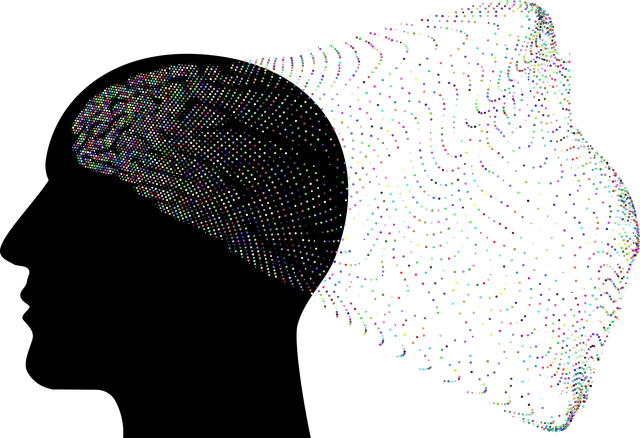The Kaiser Permanente Mental Health Center Centennial celebrates 100 years of service, promoting mental well-being through comprehensive programs and evidence-based practices. To reach diverse audiences, they should tailor messages based on age, ethnicity, and socioeconomic factors, creating impactful content and efficient resource allocation. Balancing accessibility with depth in messaging, incorporating personal narratives, and providing cultural competency training are key strategies for public awareness campaigns. Strategically selecting communication channels like social media and direct mailers ensures broad reach and deeper connections. Evaluating campaign success through metrics and qualitative assessments guides future initiatives aimed at enhancing mental health awareness in the community.
Public awareness campaigns play a pivotal role in educating communities, especially regarding mental health. The Kaiser Permanente Mental Health Center Centennial serves as an inspiring example, highlighting the impact of targeted initiatives. This article explores strategic aspects of developing successful campaigns, from understanding specific needs to choosing optimal communication channels and measuring their effectiveness. By identifying target audiences and designing compelling messaging, organizations can foster positive change, ensuring that resources like the Kaiser Permanente center remain vital community assets.
- Understanding the Kaiser Permanente Mental Health Center Centennial
- Identifying Target Audiences for Public Awareness Campaigns
- Designing Effective Messaging and Content Strategies
- Choosing the Right Communication Channels
- Measuring Success and Impact of the Awareness Drive
Understanding the Kaiser Permanente Mental Health Center Centennial

The Kaiser Permanente Mental Health Center Centennial stands as a beacon of hope and healing for many in the community. This landmark initiative celebrates a century of dedicated service, emphasizing mental well-being and fostering an environment where individuals can thrive. Through its comprehensive programs and services, the center has become a pivotal hub for stress management workshops, compassion cultivation practices, and empathy building strategies. These innovative approaches are designed to empower people with the tools needed to navigate life’s challenges, promoting resilience and overall mental health.
The Centennial marks a significant milestone, reflecting the center’s evolution and its unwavering commitment to making mental healthcare accessible and supportive. By embracing cutting-edge research and evidence-based practices, Kaiser Permanente ensures that its Mental Health Center remains at the forefront of community wellness initiatives. This dedication sets a powerful example for other organizations, inspiring them to prioritize mental health and well-being on a similar scale.
Identifying Target Audiences for Public Awareness Campaigns

Identifying the target audience is a pivotal step in designing effective public awareness campaigns, especially when focusing on sensitive topics like mental health. The Kaiser Permanente Mental Health Center Centennial, for instance, could tailor its initiatives to specific demographics within its service area. By understanding the unique needs and challenges faced by different age groups, ethnicities, or socioeconomic backgrounds, the center can create tailored messages that resonate deeply with each audience segment. This precision ensures that resources are allocated efficiently, maximizing the impact of public awareness campaigns.
A well-defined target audience allows for the development of a Risk Management Planning for Mental Health Professionals that is both relevant and engaging. For example, campaigns aimed at youth might emphasize stress management techniques through interactive workshops or social media challenges, while initiatives targeting working adults could offer practical tips on integrating mental wellness into daily routines. Such tailored approaches not only capture attention but also foster a deeper connection with the community, encouraging open conversations about mental health in various settings.
Designing Effective Messaging and Content Strategies

In designing effective messaging for public awareness campaigns about mental health, especially within a context like the Kaiser Permanente mental health center in Centennial, it’s crucial to balance accessibility with depth. The content should be tailored to resonate with a diverse audience while providing actionable insights and resources. Incorporating stories and personal narratives from individuals within the community can humanize the topic and foster a sense of connection and understanding. For instance, sharing success stories of people who have benefited from mental wellness coaching programs development at the Kaiser Permanente center can inspire hope and encourage others to seek help.
Integrating cultural competency training for healthcare providers is also essential in these campaigns. Educating healthcare professionals on the nuances of different cultural backgrounds ensures that services are offered sensitively and effectively. Self-awareness exercises can empower both care recipients and givers, promoting empathy and improving patient outcomes. By combining these strategies, the messaging becomes inclusive, informative, and ultimately more impactful, reaching not just individuals within the Kaiser Permanente mental health center in Centennial but also those beyond its walls.
Choosing the Right Communication Channels

When developing public awareness campaigns, especially for a mental health center like Kaiser Permanente Centennial, selecting the appropriate communication channels is paramount. The right choice ensures that messages reach the target audience effectively. For instance, leveraging social media platforms can help engage younger demographics in an interactive and dynamic manner, while direct mailers or community events might be more suitable for older populations. Integrating both traditional and digital methods allows for a comprehensive approach, catering to diverse preferences and accessibility needs.
At Kaiser Permanente Centennial, considering the unique nature of mental health services, employing sensitive and inclusive communication is essential. This could involve tailored messaging that addresses specific challenges faced by different communities. For example, promoting emotional well-being techniques through online webinars or workshops can appeal to those seeking Stress Reduction Methods, while community partnerships with local schools or faith groups may be ideal for Risk Management Planning for Mental Health Professionals. Such strategic channel selection not only amplifies the campaign’s reach but also fosters a deeper connection with the audience.
Measuring Success and Impact of the Awareness Drive

Evaluating the success of a public awareness campaign is paramount to understanding its impact and effectiveness. For initiatives focused on mental health, such as those conducted by the Kaiser Permanente Mental Health Center Centennial, several key metrics can be employed. These include tracking the reach and engagement of targeted audiences through social media analytics, website traffic, and event attendance. By analyzing these data points, campaign organizers can gauge the extent to which messages are resonating with the community.
Furthermore, measuring the impact on individual levels is equally crucial. This could involve surveying participants to assess their increased knowledge about mental health issues, improvements in self-awareness exercises, or even changes in behavior related to seeking help or practicing mindfulness meditation. Such qualitative and quantitative assessments collectively paint a comprehensive picture of the campaign’s overall success and inform future strategies for enhancing public mental health awareness.
The development of public awareness campaigns, as exemplified by the Kaiser Permanente Mental Health Center Centennial, requires a strategic approach. By understanding specific target audiences, crafting compelling messaging, selecting appropriate communication channels, and measuring success, organizations can effectively raise awareness and drive meaningful impact. This holistic strategy ensures that campaigns resonate with viewers, fostering positive mental health outcomes within communities.






